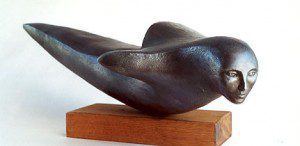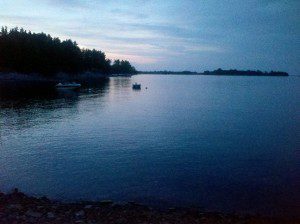
Among the Inuit, the strongest shamans are also the most gifted poets. One of the reasons their spirit helpers flock around them is that they are charmed and exhilarated by the angakok’s poetic improvisations.
The Inuit say that we need “fresh words” to attract help from the spirit world. The spirits get bored with us, and withdraw their energy from our lives, when we keep saying and doing the old things.
Inuit shamans have a language of their own, which is often impenetrable to other Eskimos. It is a language that is never still. It bubbles and eddies, opening a whirlpool way to the deep bosom of the sea-goddess, or a cavernous passage into the hidden fires of Earth.
My favorite Inuit shaman-word is the one for “dream”. It looks like this: kubsaitigisak. It is pronounced “koov-sigh-teegee-shakk”, with a little click at the back of the throat when you come to the final consonant. It means “what makes me dive in headfirst.”
Savor that for a moment, and all that flows with it. A dream, in Inuit shaman-speech, is something that makes you dive in headfirst. Doesn’t this wondrously evoke the kinesthetic energy of dreaming, the sense of plunging into a deeper world? Doesn’t it also invite us to take the plunge, in the dream of life, and burst through the glass ceilings and paper barriers constructed by the daily trivial self?
~
The wonderful sculpture of Sedna, the Inuit sea goddess, is the work of Joan Relke, who was inspired by a dream. She recalls, “this dream came at a time when I was struggling over a decision to stop or continue a project. I was under water and saw coming towards me a shiny gold sea creature with one fin and long hair. She swam by me, her eyes fixed straight ahead with an air of complete self-sufficiency and containment. I knew she had deliberately swum past me to display her demeanor. The next morning I went straight to my studio and carved her before the vision faded. A year later a friend told me the Inuit myth, and I named my sculpture after Sedna.”

